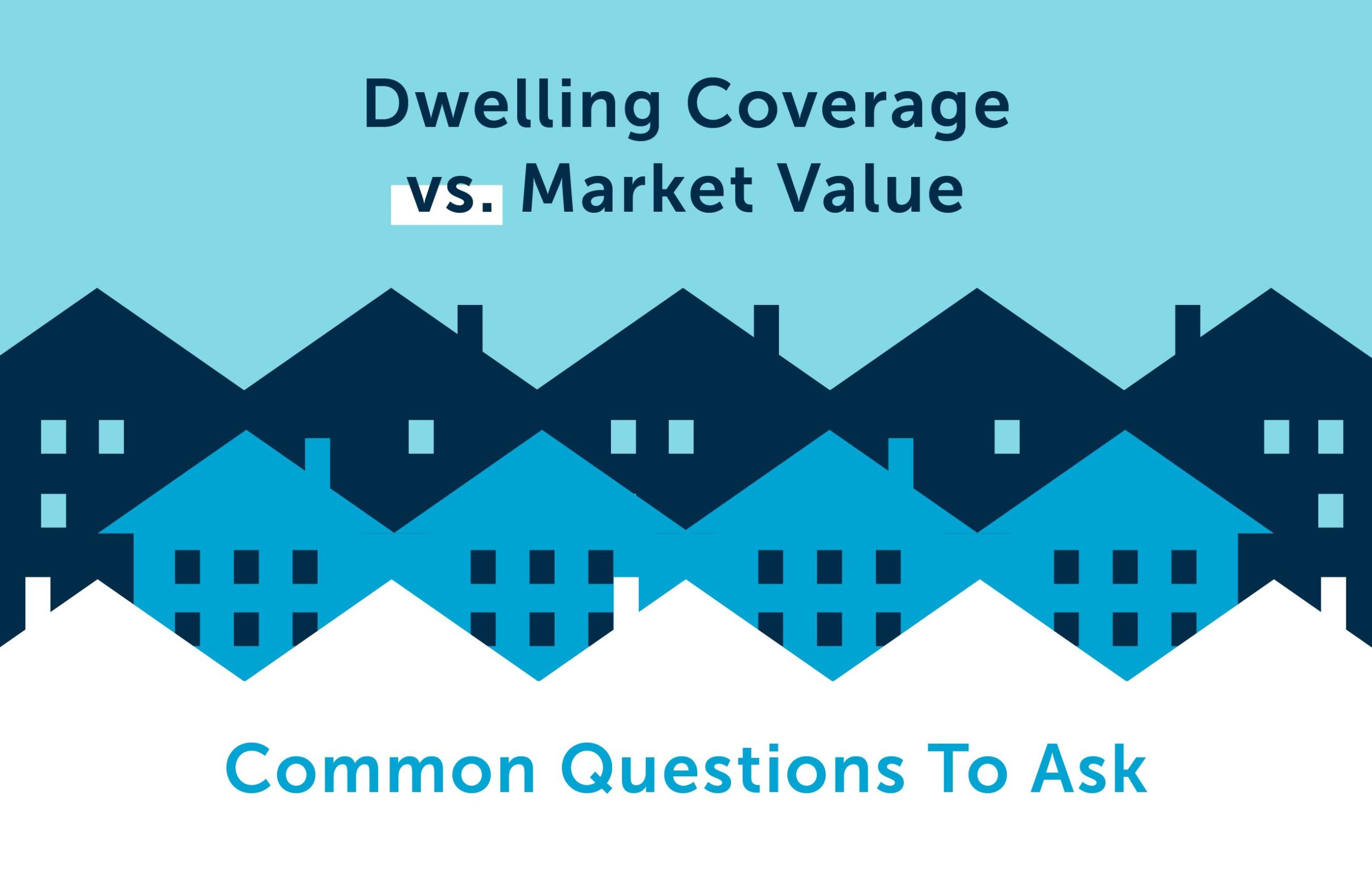Dwelling Coverage vs. Market Value: What’s the Difference?

With home values significantly rising across the country over the past few years, it’s important to understand the difference between dwelling value and market value when it comes to home insurance. When buying or selling a home, much of the conversation and considerations focus on market value, which is the amount a home can be bought or sold for in the current market. In contrast, insurance companies prioritize dwelling value, which is the estimated replacement cost of a structure.
How Much Dwelling Coverage Do I Need?
An insurance company is never going to sell your home, but they will replace it should you suffer a catastrophe like a tornado or house fire. For this reason, it’s vital that your home is insured for the proper amount needed to rebuild rather than what the real estate market might dictate the home’s worth to be based on the current housing market.
Several years ago, when it was considered a “buyer’s market,” many homeowners were confused about why they were required to insure their home at a value higher than what they were likely to receive if they sold. Due to the lack of demand and ample homes on the market, market values had been driven below cost to rebuild. In 2022, however, we find ourselves navigating a very different landscape. Rising inflation, pandemic impact, and the current “seller’s market” have driven both market and dwelling values up, leaving homeowners with an entirely different set of choices to make.
Read on to learn more about how COVID and inflation are impacting dwelling and market values, as well as ways Central can help you determine whether your home is insured for the proper amount.
How has dwelling coverage been impacted by the COVID-19 pandemic?
At the onset of the COVID-19 pandemic, major building material manufacturers were forced to slow or cease production as shutdowns spread across the globe. While U.S. supplies decreased, the nation saw an increase in the demand for building materials as people moved out of densely-populated cities, and into suburbs and rural areas to construct new homes or renovate existing structures. This imbalance between supply and demand drastically drove up the cost of building materials, with lumber pricing 135% higher than at the beginning of 2020.
In addition to supply and demand struggles, post-pandemic worker shortages have impacted costs by continuing to hinder production capabilities throughout the industry. Even as material manufacturers and construction crews attempt to ramp back up, a lack of laborers and skilled workers continues to make it difficult to regain momentum and catch up with the persistent market demands. Ultimately, the challenges of these labor shortages and inflated material costs are being passed on to those building or renovating homes, driving up both market and dwelling values.
What Does Dwelling Coverage Actually Include?
Even in a stable market, you may find yourself wondering why you’re insuring your home for the same amount it might cost to rebuild. It’s important to remember that contracting costs include labor, materials, and contractor overhead. Insuring your home for less means you may not get all the upgrades you currently enjoy, such as granite countertops, maple or cherry cabinets, or hardwood floors.
Learn More: How Does Your Homeowner Policy Respond To Total Losses?
Debris removal is another piece of the dwelling value puzzle that people often overlook. Most policies include coverage to remove the charred remains of your home after a fire, and the cost of debris removal is significant. Local ordinance may also require the undamaged portion of your home be removed if it sustains significant damage. Each town ordinance requires demolition when a certain percentage of damage is reached. In instances like this, your dwelling value not only covers the cost of rebuilding your home, but also the demolition of the undamaged portion, and any costs associated with hauling away debris so that your new home can be constructed.
The Central Difference
As you can see, there is more to insuring your home than one might think. We recommend reassessing your dwelling value with your agent every three to five years to ensure your home’s replacement cost remains in line with the market.
By preparing for the worst-case scenario today, you can save yourself hassle and headaches should the unthinkable ever happen. And you can rest easy knowing Central will be right there with you at every step of the way.
Like this:
Loading…



